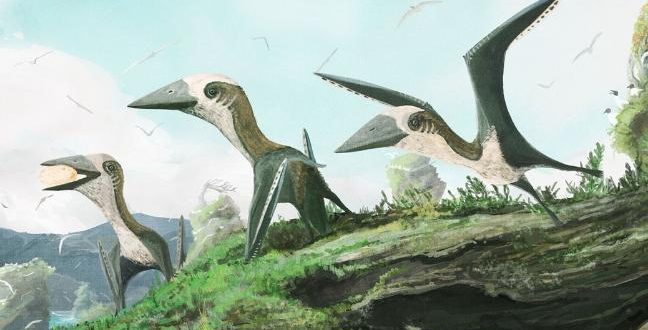The new pterosuar is small-bodied which is unusual for flying reptiles from Cretaceous period which mostly had larger wings and bodies.
Living between 70 million and 85 million years ago and a member of the pterosaur family of flying dinosaurs, the newly-found fossil calls into question the idea that only massive pterodactyls with 20-foot wingspans inhabited the skies of the Cretaceous, according to a study published in the journal Royal Society Open Science.
“We’ve got a small pterosaur when everyone said they shouldn’t be there,” Elizabeth Martin-Silverstone, a paleontologist from the University of Southampton in the United Kingdom, told National Geographic. “But we have one, and that’s really cool.”
Learning More About the Dinosaurs
During the Jurassic and Triassic, small pterosaurs were quite common. However, the disappeared by the time the Cretaceous rolled around. The lack of small Cretaceous pterosaurs led scientists to propose that the niche for small flying animals was filled by birds, according to Martin-Silverstone. The thinking went that “in order to survive, pterosaurs had to be big,” she added.
The thinking might now change due to the fossil specimen discovered on Hornby Island, located along Canada’s Western Pacific coast. Rather than having the size and wingspan of a small plane, this pterosaur had a wingspan of about five feet, the same as a horned owl.
“Maybe small pterosaurs weren’t outcompeted,” Martin-Silverstone said. “Maybe they’re just not being preserved” as fossils.
The researchers were only able to recover a vertebrae, a forelimb bone, and a few other bits – not enough to describe a new species. The researchers also said they didn’t know what this animal might have eaten and if it would have competed with larger pterosaurs.
Due to a lack of evidence, scientists are reserving judgment about this animal’s role in a Cretacoues ecosystem and the evolution of pterosaurs.
“The authors have done a good job given the limited data,” Richard Butler of Britain’s University of Birmingham told Nat Geo. “A pterosaur identity is probable … but they cannot be completely certain that it is not a bird.”
Butler also said this may have been a juvenile specimen of a large pterosaur.
Agencies/Canadajournal

 Canada Journal – News of the World Articles and videos to bring you the biggest Canadian news stories from across the country every day
Canada Journal – News of the World Articles and videos to bring you the biggest Canadian news stories from across the country every day

